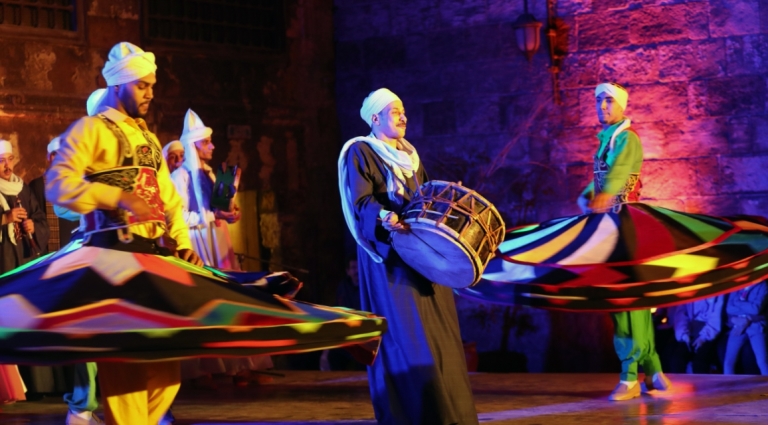The Tanoura dance is a mesmerizing traditional folk dance that’s become very popular in Dubai and many other countries in the Islamic World.
The Tanoura dance originated in the 12th century in Sufi fraternities in Egypt and Turkey. The dance is rooted in Sufi spiritual practices, which, like most folk dances, eventually evolved to become performance art.
The Tanoura dance is a captivating religious dance with deep spiritual symbolism. Its spinning motion represents the cyclical nature of the world, starting and ending at the same central point.
Table of Contents
Tanoura Dance Performance
Typically, performance is done by Sufi men – backed by traditional Sufi Tanoura dance songs.
These dancers would be attired in four skirts that they could manipulate. This is to create different designs on stage and spin around.
The spinning motion represents the rotation of the universe. It is believed to induce a state of trance and spiritual enlightenment.
The dance troupe is headed by a single lead dancer representing the sun. The background dancers support the lead dancer’s performance, each of whom represents the planets.
The dancers’ skillful movements with four different skirts depict the four seasons, reminiscent of the anti-clockwise movement around the Holy Shrine in Mecca, known as the Kaaba.
At a poignant moment in the performance, the dancer raises his right arm while pointing his left arm down, symbolizing the unity of earth and heaven.
The dancer is believed to enter a trance-like state, turning himself to become light and ascending to heaven.
The Tanoura dance is visually stunning and carries profound spiritual meaning.
Check more: What Is Maxixe Dance?
Tanoura Dance Music
Typically, the tune and rhythm of a Tanoura performance are set by traditional instruments like the tabla, flute, and tambourine.
The Tanoura dance showcases the rich cultural heritage of Egypt and has gained popularity worldwide. It is not only a form of entertainment but also serves as a celebration of spirituality, unity, and artistic expression.
